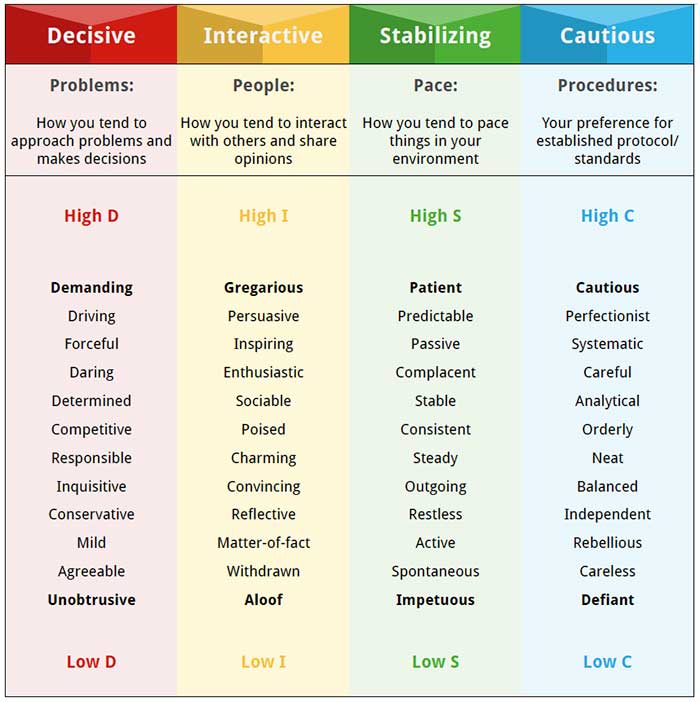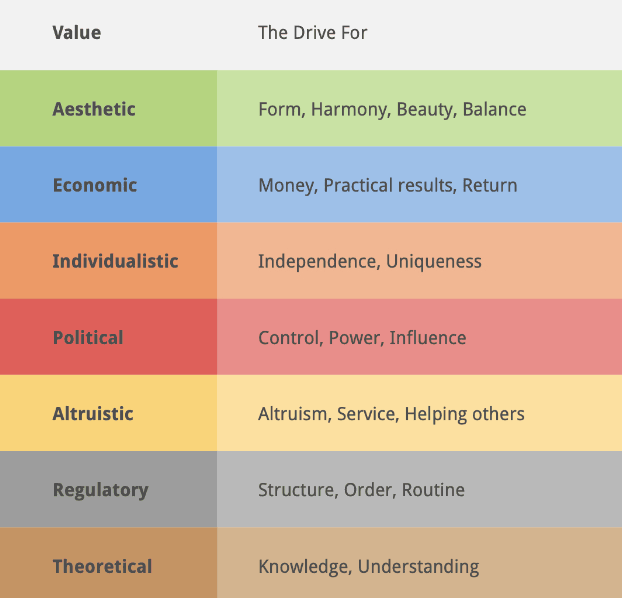Over 70% of Fortune 500 companies use a DISC personality assessment either in their recruiting and hiring process or as part of their employee development programs. Countless small businesses have followed suit because they realize the value DISC behavioral profiles provide in ensuring candidate ‘fit’ and how knowledge of DISC can improve team engagement, communication, and collaboration.
But, the smartest companies choose a DISC Plus profile. What’s with the Plus? It gives you a look at people’s ‘Why’. What gets them out of bed in the morning? Why are they motivated to act the way that they do? What lights their fire?
Using DISC is a great start, but behavior is only one piece of the human puzzle. Seeing what motivates someone is vital to understanding their unique personality and their level of engagement in their work. When you combine the motivational aspects of the human experience with the behavioral characteristics covered by DISC, you’ve got a more holistic examination of each particular human’s experience. We are all not made from the same mold, so a cookie cutter approach to motivation can fail from the start.
By the end of this post, you’ll gain a better understanding of just how vital knowing your team’s motivations can be, and some ideas that will help you create a more diverse motivational environment that evaluates each ‘cookie’ on your team.
We‘ll start by reviewing what DISC can tell you about someone.
Table of Contents
Behavior You Can See
You don’t have to be a licensed professional to spot people’s behavioral preferences. They’re right there in front of you in how they choose to act.
Here’s how DISC identifies them:

Pretty easy to see the difference between someone who is higher on the Decisive scale and someone who is higher in their Cautious numbers, isn’t it? The higher D is typically comfortable with risks and likes a quick decision-making process, while the higher C may prefer to mitigate those risks by taking a more measured approach to making decisions.
In the simplest terms:
- Higher D says – ‘Let’s GO! We’ll think about it later.’
- Higher C says – ‘Let’s think BEFORE we go.’
They both make great decisions, just in different ways. Can you identify people in your world who behave in one of these ways? Ever wonder what drives them to act the way that they do? The answer lies in their values and motivators, but you might not be able to see them easily.
Values are Harder to Spot
Seeing what motivates someone is hidden and tougher to identify. Using a Values assessment helps you identify those deeper motivations. In addition to the behavioral patterns our DISC assessment picks up, here’s what our DISC Plus profile also uncovers:

You can get a full explanation of each of these characteristics in this article
Now that you’ve got the basics, here’s how values and motivators can impact behavior.
Values in Action
Meet Norman.

Norman is an Account Manager on the Sales Team. In his DISC results, he is highest in the D, which means he leans toward being very Decisive. Spend 2 minutes with him and you can tell that he prefers when decisions are made quickly so he can take action and move on to the next account on his list. That’s a great behavioral characteristic to have in a Sales role, isn’t it?
Norman is usually happy as a clam since new, qualified leads appear in his inbox every day, and he can control the pace he uses to get through that list. But he started to exhibit a concerning pattern.
After the weekly goals meeting where the agenda is solely about the potential for bonuses and who’s closest to winning a week in Hawaii, the rest of the team leaves fired up. But Norman appears ‘checked out’ during the meeting and his pace really slows down for a few days after.
He’s a great guy and his clients really love him, but he just doesn’t seem to be invested enough at times to make his numbers. That high D from his DISC should be enough to drive him, shouldn’t it? What is wrong with him?
The problem might not be him… it might be his motivational environment. And with a subtle shift or two in how the team operates, Norman could find himself in a more welcoming space.
Why is a Values Assessment Valuable?
When the Sales team took the DISC Plus assessment, in addition to dominant D scores almost everyone showed a very high Economic drive. This is the drive to achieve, both money and practical return or ROI. This is the drive that gets people excited about team incentives, bonuses, and competing for trips to Hawaii.
Norman was the exception. His highest values score was in the Altruist column. This is the drive to help others, to create a smoother path for someone else. Incentives and bonuses don’t hold much value for Norman, so is it any wonder that he ‘checks out’ during meetings if the only thing discussed is who’s leading the pack and who closed the most deals?
Norman is motivated by his Altruistic drive and desires above all else to help all people, his clients AND his teammates, and he is always putting others’ needs before his own.
By knowing Norman’s highest motivator, it’s possible to change the narrative during weekly meetings to accommodate him. Taking some time in the agenda to discuss how much good they are all doing for their clients, how much easier their lives are, how much money your product saved them… these are all things that could appeal to Norman.
Creating a Motivationally Diverse Environment
Knowing the values and motivators of everyone on a team can help managers tailor meeting agendas, 1-on-1 conversations, performance reviews, OKR’s (Objectives, Key Results), and even job descriptions to better suit individual team members. Better yet, allow team members to have input into or even create their own goals or OKR’s.
If you want a motivated and engaged workforce avoid making assumptions about what motivates them based solely on their DISC. Employ a Values profile that will help you to identify the unique value they each bring to the team and help you create a more motivationally diverse environment that speaks to their key drivers.
Use a DISC Plus or Values assessment to create the motivational diversity your team needs to perform at their best.

